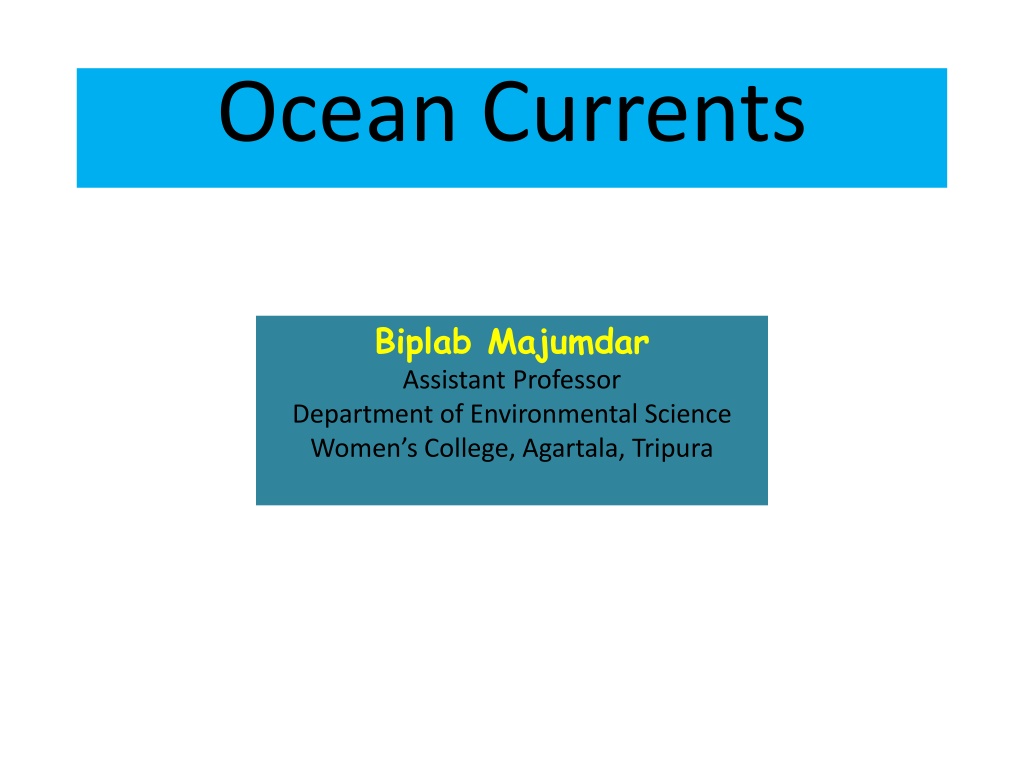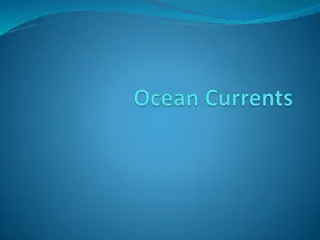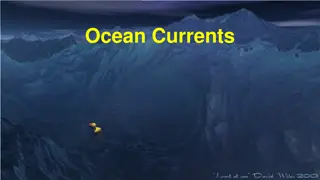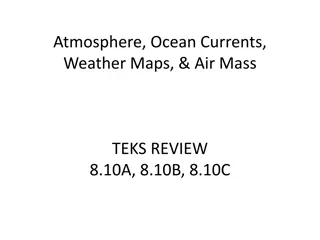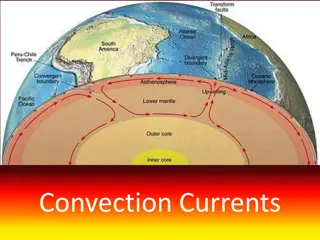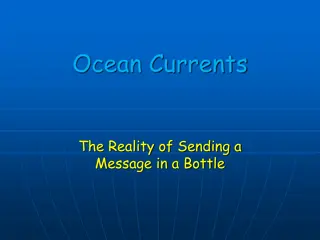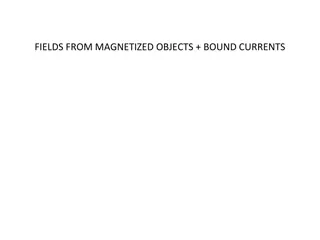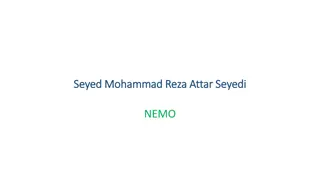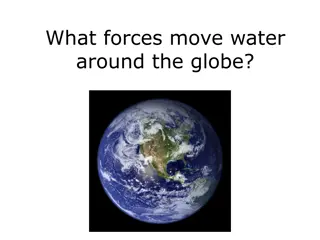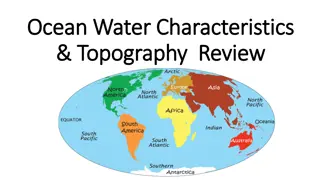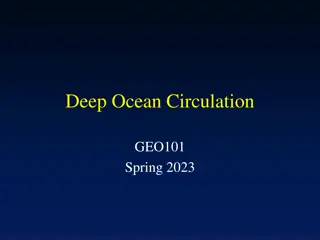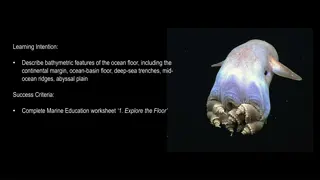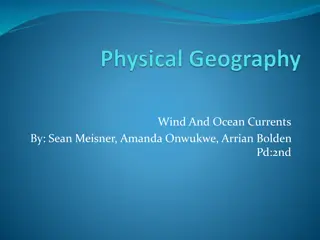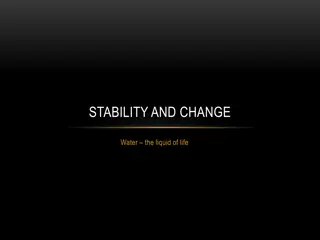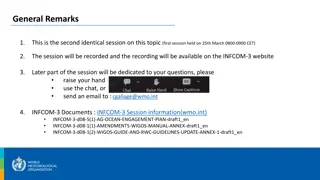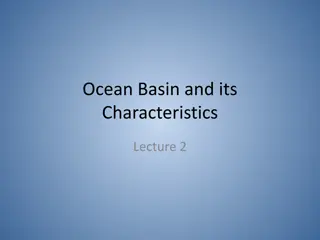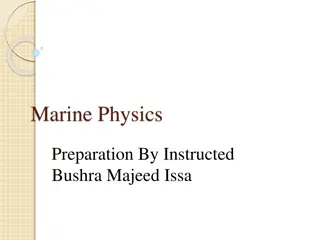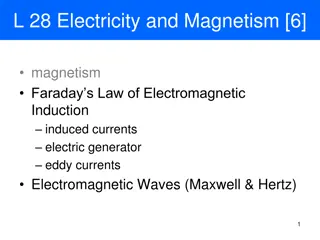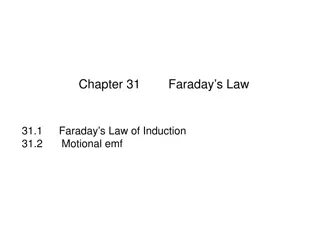Understanding Ocean Currents and Their Impact
Dive into the world of ocean currents with Assistant Professor Biplab Majumdar as he explores the different types of currents, such as surface and deep water currents. Discover how surface currents are influenced by factors like global wind patterns, the Coriolis effect, and continental deflections, and learn about phenomena like Ekman transport and ocean gyres. Explore the powerful Antarctic Circumpolar Current and its role in driving some of the planet's strongest winds and storms.
Download Presentation

Please find below an Image/Link to download the presentation.
The content on the website is provided AS IS for your information and personal use only. It may not be sold, licensed, or shared on other websites without obtaining consent from the author. Download presentation by click this link. If you encounter any issues during the download, it is possible that the publisher has removed the file from their server.
E N D
Presentation Transcript
Ocean Currents Biplab Majumdar Assistant Professor Department of Environmental Science Women s College, Agartala, Tripura
Two Types of Currents 1. Surface Currents 1. Deep water currents- very slow
Surface Currents Hotizontal, Stream like movement of water that occurs at or near the surface of the ocean Can reach up to several 100 meters Move huge amounts of water Affect the upper 10% of the worlds oceans Move the shallow warm, low density waters Two types: Hot and cold current
Driven force of surface current Controlled by three factors Global wind : cause surface currents to flow in the direction the wind is blowing. Trade wind: Push equatorial current west ward. Westerly winds: Push polar current eastward. Coriolis effects The apparent curving of moving objects due to the earth rotation Northern Hemisphere-clockwise Southern Hemisphere- anticlockwise Continental deflections: Shape of Continents change the direction of current flow
Source of energy Prevailing Winds Tradewinds- blow from the East West Westerlies- blow from the West East ** trade winds converge at the equator
Coriolis effect Earth s rotates (west to east) Water moves slower than wind causes the water to bend in a 45angle to the direction of the wind
Ekman Transport Describes the phenomenon of the movement of water relative to the wind by in a 45 degree direction. Ekman - a result of both the prevailing winds and the Coriolis effect. Transports water to 100 m.
Ocean Gyres The circular motion of currents in the ocean basins. Initiated by the Ekman spiral
The Antarctic Circumpolar Current AKA- West wind drift Driven by westerlies Biggest winds & biggest storms on the planet.
Western Boundary Currents Fastest Deepest Move warm water from the tropics to the poles Tend to form eddies Largest and fastest= Gulf Stream 2nd largest and source of tuna= Kurashio (Japan) Eddy= small, temorary loops of swirling water.
Transverse Currents Link western and eastern currents Move water from east to west Move water from west to east Examples include:
Importance of Surface Currents 1. Distribute Tropical Heat 2. Influence Weather and Climate Water stores heat- moderates coastal climate
Wind Induced Vertical Circulation Upwelling- the movement of deep ocean water up to the ocean surface. An upwelling event occurs when: Identify upwelling sites: Winds blow water away from the coast outward When two currents diverge
Importance of an Upwelling Brings nutrient rich waters to the surface Increases primary productivity- surface Increases oxygen in the water Increase in heterotrophic populations
Downwelling The movement of surface waters downward to the deep waters. Carries oxygen rich water downward.
ENSO El Nino- an increase of temperatures in the surface waters of the tropical Western Pacific and of the coast of Equador and Peru. Effects: South America: Prevents the upwelling along the western coast of S. America Reduces fishing population Reduces guano production Destroys the economy World: Affects the tradewinds around the world Effects weather- droughts and torrential rains Caused by: Weak surface winds caused by a high pressure zone
Tides The rhythmic rising and falling of sea waters It is a Wave with the longest wave lengths Result from the gravitational pull of the moon and the sun.
Two high tides a day The earth completes a full rotation every 24 hrs The moon pulls upon the oceans creating a bulge( tide) Centrifical force causes the secon
